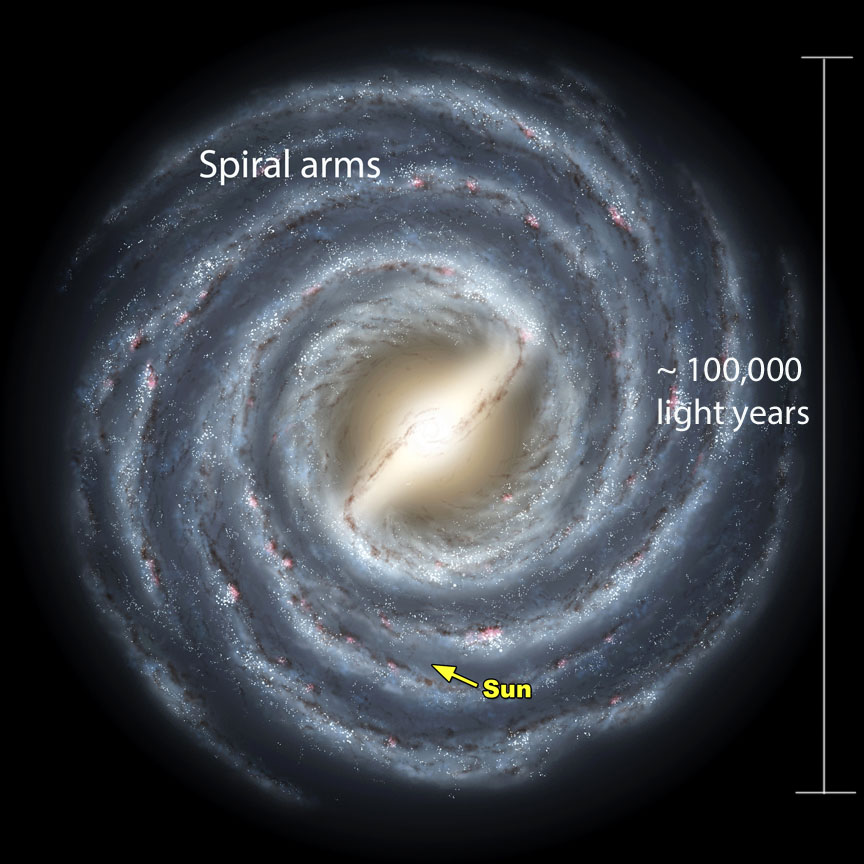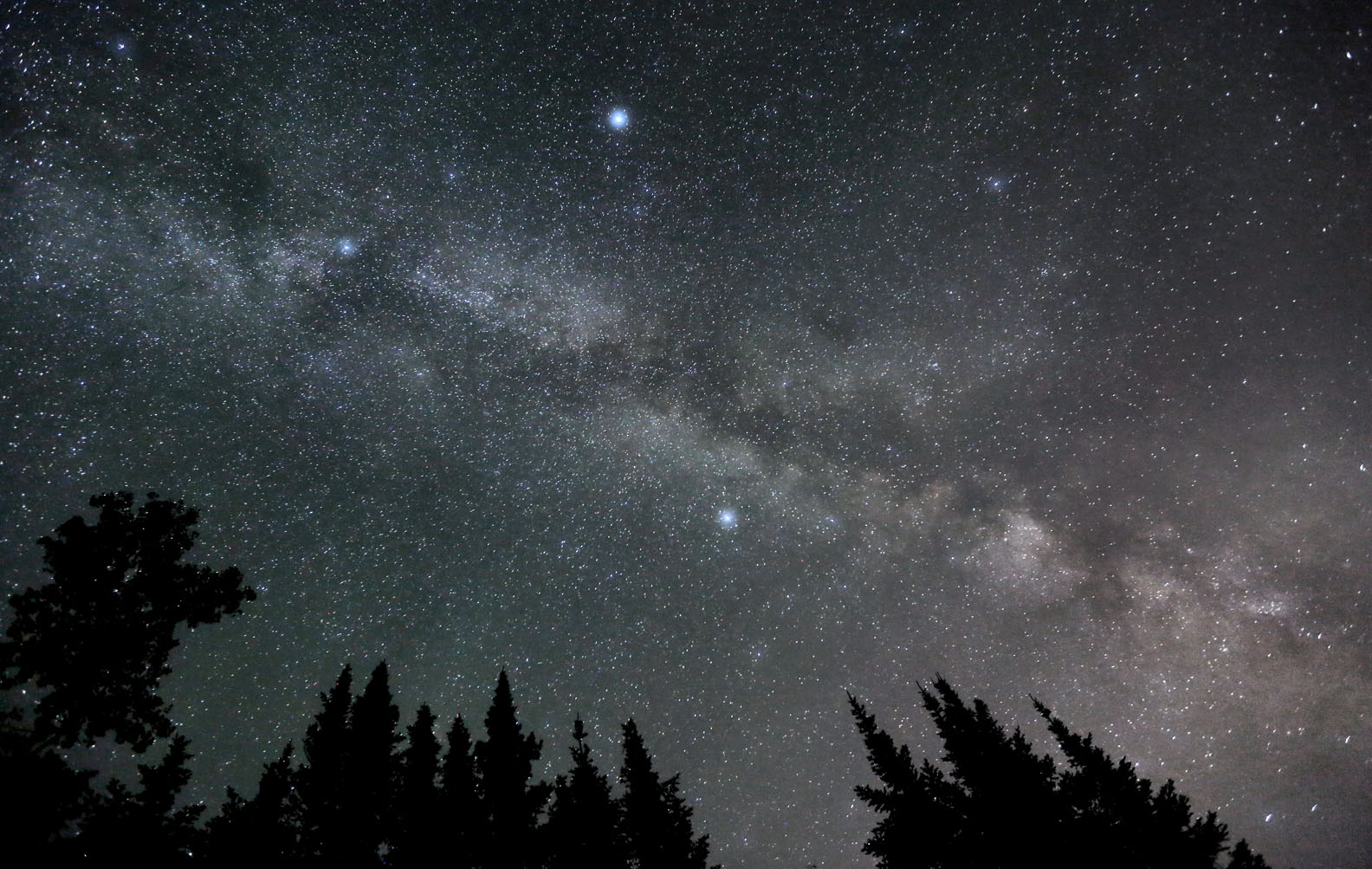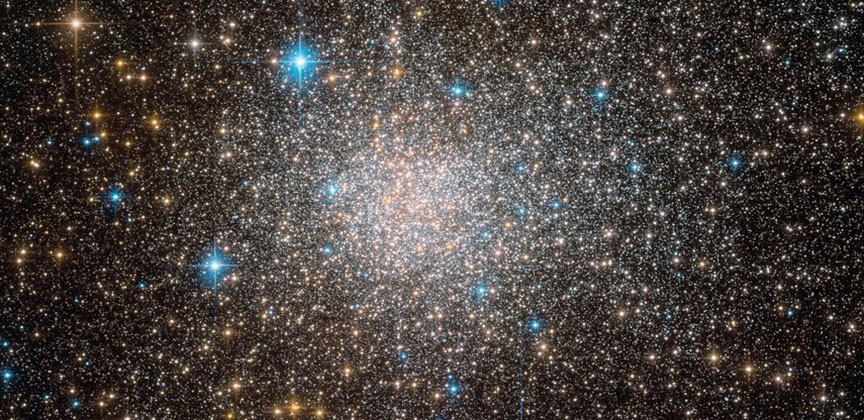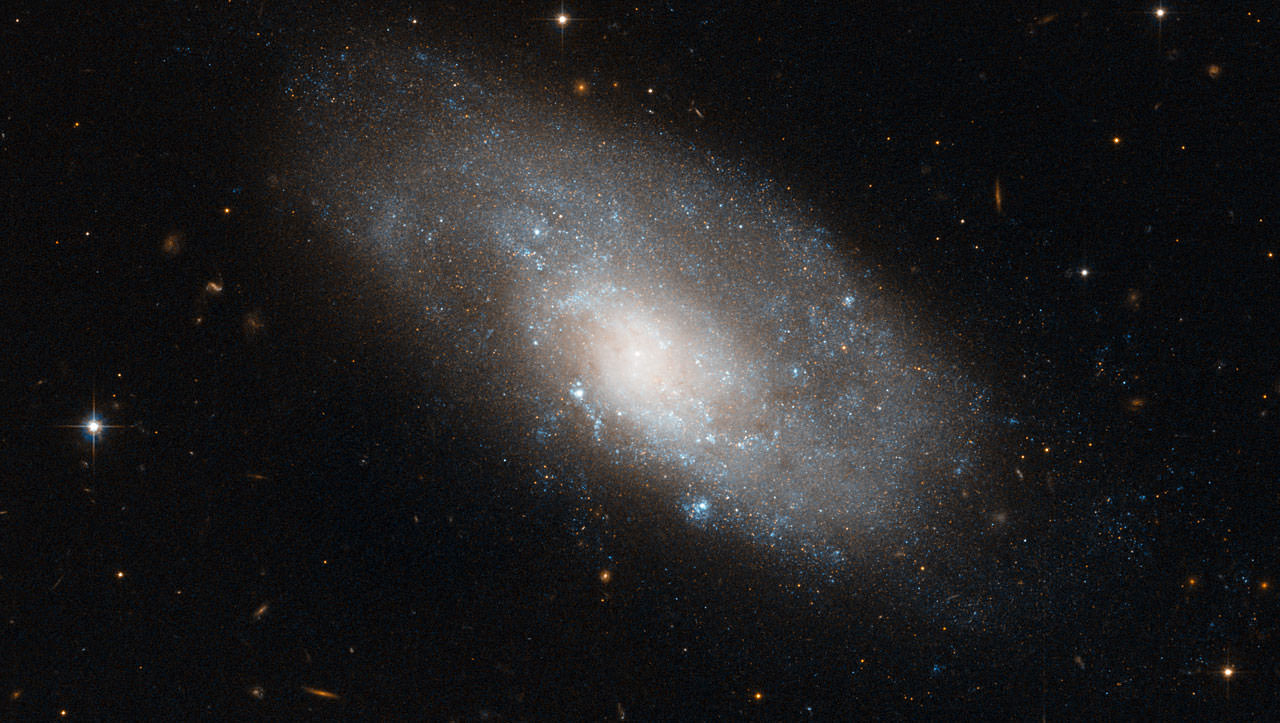
Not many people have heard of the globular star cluster Terzan 5. It’s a big ball of stars resembling spilled sugar like so many other globular clusters. A very few globulars are bright enough to see with the naked eye; Terzan 5 is faint because it lies far away in the direction of the center of Milky Way galaxy inside its central bulge. Here, the stars that formed at the galaxy’s birth are packed together in great numbers. They are the “old ones” of the Milky Way.
Today, a team of astronomers revealed that Terzan 5 is unlike any globular cluster known. Most Milky Way globulars contain stars of just one age, about 11-12 billion years. They formed around the same time as the Milky Way itself, used up all their available gas early to build stars and then spent the remaining billions of years aging. Most orbit the galaxy’s center in a vast halo like moths whirring around a bright light. Oddball Terzan 5 has two populations aged 12 billion and 4.5 billion years old and it’s located inside the galactic bulge.

The team used the cameras on the Hubble Space Telescope as well as a host of ground-based telescopes to find compelling evidence for the two distinct kinds of stars. Not only do they show a large gap in age, but the differ in the elements they contain. Terzan 5’s dual populations point to a star formation process that wasn’t continuous but dominated by two distinct bursts of star formation.
“This requires the Terzan 5 ancestor to have large amounts of gas for a second generation of stars and to be quite massive. At least 100 million times the mass of the Sun,” explains Davide Massari, co-author of the study.
Its unusual properties make Terzan 5 the ideal candidate for the title of “living fossil” from the early days of the Milky Way. Current theories on galaxy formation assume that vast clumps of gas and stars interacted to form the primordial bulge of the Milky Way, merging and dissolving in the process.
While the properties of Terzan 5 are uncommon for a globular cluster, they’re very similar to the stars found in the galactic bulge. Remnants of those gaseous clumps appear to have stuck around intact since the days of our galaxy’s birth, one of them evolving into the present day Terzan 5. That makes it a relic from the Milky Way’s infant days and one of the earliest galactic building blocks. Later, the cluster, which held onto some of its remaining gas, experienced a second burst of star formation.

“Some characteristics of Terzan 5 resemble those detected in the giant clumps we see in star-forming galaxies at high-redshift (galaxies just beginning to form in the remote universe in the far distant past), suggesting that similar assembling processes occurred in the local and in the distant universe at the epoch of galaxy formation,” said Dr. Francesco Ferraro from the University of Bologna, Italy, who headed up the team.

Terzan 5’s chandelier-like presence is helping astronomers understand how our galaxy was assembled. Reconstructing the past is one of the key occupations of astronomy. The present is continually departing with every passing moment. Soon enough, every piece of information slips into the past tense. In the near-past, which records humanity’s comings and goings, details are often forgotten or lost. The deep past is even worse. With no one around and only scattered clues, astronomers continually look for fragmental remains that when woven into the fabric of a theory, reveal patterns and processes before we came to be.


